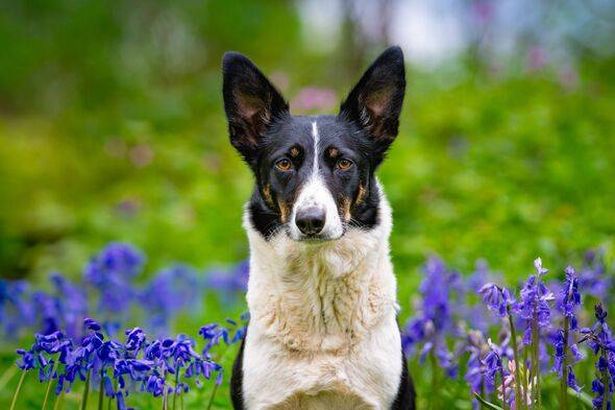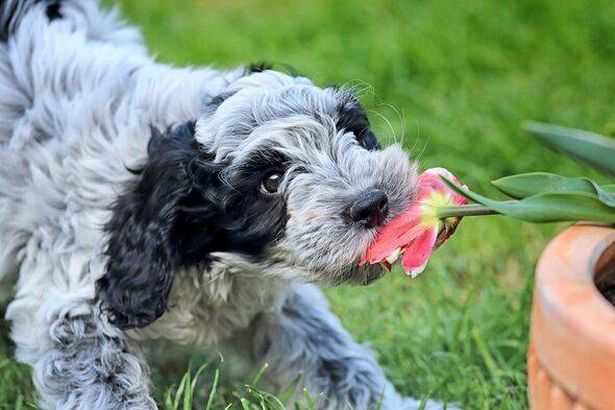As the weather warms up and people spend more time in their gardens, dog owners are being urged to be vigilant as some of the most popular plants could be dangerous for pets. Dogs and plants are not a good mix, and that’s where the owner comes in, to keep an eye on things(Image: (Getty Images))
Dogs and plants are not a good mix, and that’s where the owner comes in, to keep an eye on things(Image: (Getty Images))
Gardeners and dog owners are being advised to be careful when choosing plants. While some plant names like Poison Ivy and Deadly Nightshade serve as clear warnings, many popular garden plants could pose hidden dangers to dogs.
BBC gardening expert Monty Don is preparing to reveal his pet-friendly RHS and Radio 2 Dog Garden at the upcoming Chelsea Flower Show, which promises “all the things that dogs love, regardless of horticultural fashion, and a beautiful space.”
However, as anticipation grows, there’s a timely reminder that many attractive plants can be toxic if nibbled on by curious dogs.
READ MORE: TSA bans 7 items from all aircraft from checked luggage for U.S. travel – full listREAD MORE: CNN feels the wrath of Karoline Leavitt as she brands interview ‘despicable’
With spring in full swing, particular attention should be paid to bulbs such as daffodils, tulips, crocuses, and bluebells, all of which can harm dogs’ health.
Dogs, especially puppies who love to dig, may chew on anything they find, including potentially harmful flower bulbs.
 This little dog is living his best life, but he needs to watch out for those tulips because they could prove deadly (Image: (Image: Jane Khomi via Getty Images))
This little dog is living his best life, but he needs to watch out for those tulips because they could prove deadly (Image: (Image: Jane Khomi via Getty Images))
It’s essential for dog owners to keep a close eye on their furry friends in unfamiliar gardens. Even Monty Don’s dog-focused garden has an area that is off-limits unless the dog is with its owner.
The Kennel Club has issued advice highlighting that even water from a vase containing daffodils can cause severe illness in dogs, with some common plants capable of causing serious or even deadly reactions if eaten by pets.
Daffodil poisoning can cause your furry friend to suffer from symptoms like drooling, vomiting, diarrhea, lethargy, and lack of coordination. In the worst cases, dogs may even have seizures.
As you enjoy the springtime scenery with your pooch, be cautious around bluebells. Despite their beauty, these plants harbor toxins that can harm a dog’s heart.
 This dog knows what’s up, that’s why he has his back to the bluebells(Image: (Image: Brighton Dog Photography via Getty Images))
This dog knows what’s up, that’s why he has his back to the bluebells(Image: (Image: Brighton Dog Photography via Getty Images))
While dogs typically find bluebells too bitter to eat in large quantities, ingestion can still lead to serious, sometimes deadly, consequences.
Tulips are another springtime bloom to watch out for; their bulbs contain a toxin that can severely irritate a dog’s mouth and digestive system, causing drooling, vomiting, and diarrhea, and in severe instances, heart issues and breathing difficulties.
Amateur Gardening magazine has shed light on other potential dangers for our canine companions, such as hazardous barbecue leftovers. Dogs could be fatally injured by discarded skewers or sharp bones.
 Dogs are prone to dig, so that’s something to watch out for, as they may come upon a bulb and chew on it (Image: (Image: Anita Kot via Getty Images))
Dogs are prone to dig, so that’s something to watch out for, as they may come upon a bulb and chew on it (Image: (Image: Anita Kot via Getty Images))
Expert Sue Bradley cautions: “There have been cases of ash balls in the stomachs of pets that have eaten large amounts of ash covered in meat fat.”
Sue also shared a list of 14 toxic plants that dogs should steer clear of, including daffodils, but warned there might be more.
The list features Deadly nightshade (Atropa belladonna), Poison ivy (Rhus toxicodendron), Spring bulbs (like daffodils and snowdrops), and Azaleas (Rhododendron indicum), Elephant ears (Bergenia spp), Castor bean (Ricinus communis), Lily of the valley (Convallaria majalis), Oleander (Nerium oleander), Alpine daphne (Daphne alpina), Foxglove (Digitalis purpurea), Holly-leaved hellebore (Helleborus argutifolius), Sago palm (Cycas revoluta), Cardinal flower (Lobelia cardinalis) and Two-lobed false hydrangea (Hydrangea bifida) are all plants that pose a risk to dogs.
Additionally, rhubarb leaves and onions can also be harmful to our canine friends.
 If you think your dog has ingested plants or flowers that are harmful, the best thing to do is contact the vet immediately (Image: (Image: © Jackie Bale via Getty Images))
If you think your dog has ingested plants or flowers that are harmful, the best thing to do is contact the vet immediately (Image: (Image: © Jackie Bale via Getty Images))
If you suspect your dog may have ingested, touched or inhaled something potentially harmful, it’s crucial to contact your vet immediately.
It’s important to note that inducing vomiting in your dog should never be attempted, as this could lead to further complications and cause lasting harm to your pet.

